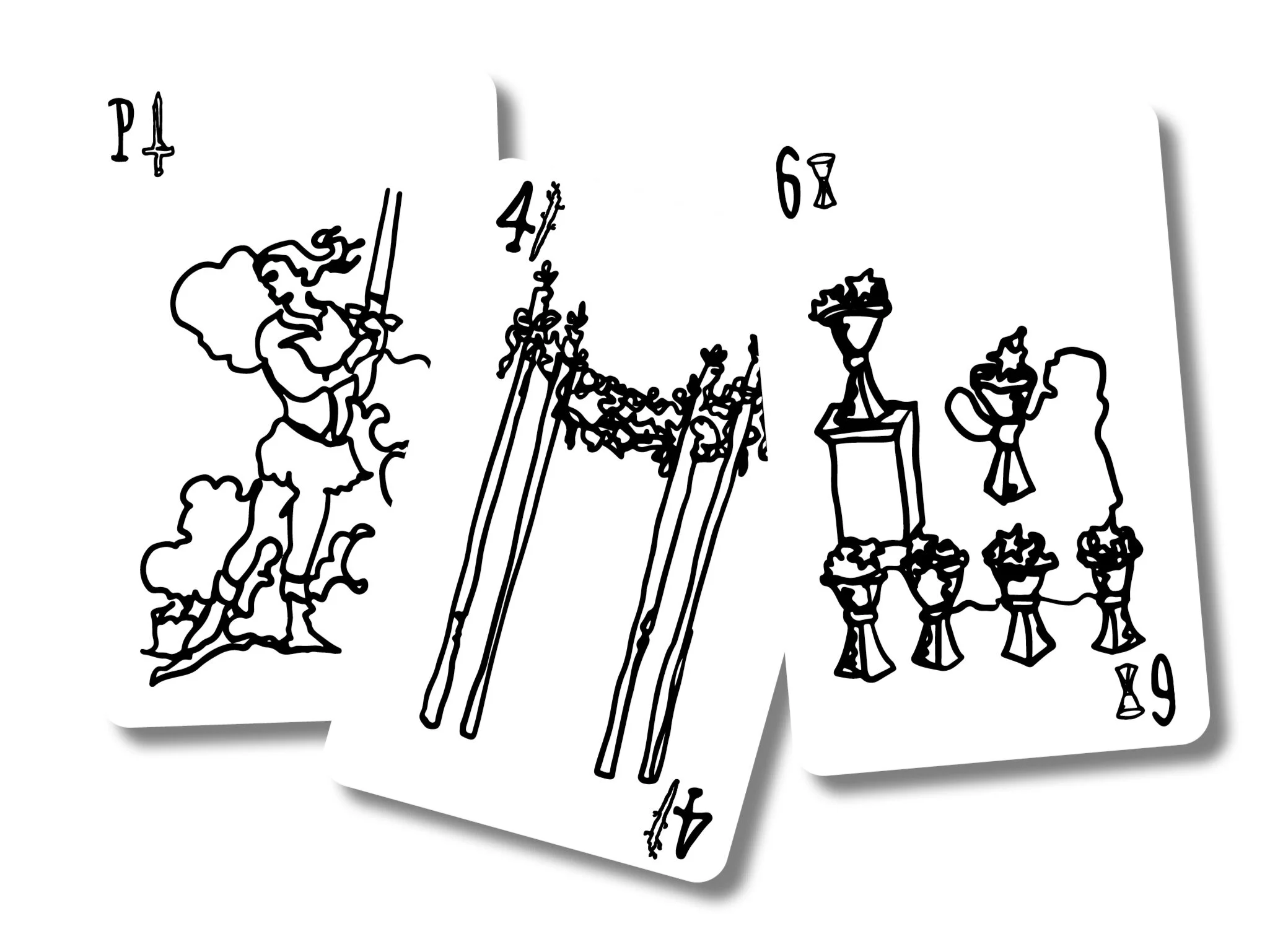Introducing the Life Line Tarot
(UPDATE: The deck is now actually done and ready to ship. Also, I’m no longer a Leo moon.)
I am proud to announce on this Leo Full Moon (I’m a Moon in Leo) that I have created a tarot deck, the Life Line Tarot.
Okay, it’s 95% done. But the final sample is going to the printer this weekend, and my future self has budgeted the time, so in my mind it feels like it’s done. It’s in a brand-new section of my store, My Decks, and it’s ready for super-discounted early pre-order. (I don’t expect it to ship out for another two months, so it’s doubly discounted. In a month, it will be less discounted. Pre-order now.)
It’s a black-and-white single-line(ish)* art deck based on Pamela Colman Smith’s 1909 illustrations for Waite’s original Rider deck. If you’ve read or heard me talk about the River of Time in my ancestor and past life work, meandering single-line art should make perfect sense to you. Single-line art is something I loved to do as a kid, and it’s also relatively quick to do (but a surprising pain to clean up for production), so I can express myself with the Mercurial speed I need. It’s also a good fit with my preference for a (relatively) inexpensive black-and-white deck evoking playing cards.
*It’s “single-line(ish)” because I created the art with a digital stylus, so it required frequently lifting the nib off of my tablet. But I always started the line where I left off. Also, unlike what some folks may consider more “pure” single-line art, there’s some doubling back. But, y’all, art is not the Snake game or Ghostbusters!. You can cross those lines.
Life Line Tarot is derivative of Smith’s art—there’s no denying that—but I’m proud of the many creative decisions I made about what to bring in, what to leave out, and what to outright change (the 3 of Swords is about so much more than heartbreak). That’s not accidental or just a convenience of the line art, and I’m really excited about the potential for a reader to see something new in the image and fill in the missing pieces with their own intuitive insights. The cards also include enough abstract patterns to support those who scry in their divinations.
Abstractions allow for entirely new and personal meanings. I didn’t write any letters in the vines of the Magician’s wand, but could the mercurial figure actually be writing a spell before our eyes? Meanwhile, the Sun and Devil break the normal rules, pushing past the borders of their space and disrupting the polite order of the lower major arcana.
The major arcana are the most “complete” in their imagery, but you’ll see more environmental features in the cosmic/environmental cards (cards XV–XXI / the third septenary). There are also some fun symbolic parallels to help emphasize the overlapping nature of the majors that can be lost when every card is chock full of images.
The minor arcana are designed to work as separate playing cards with number and suit indicated in opposite corners (other than Aces). The pips (2–10) have the most “missing” pieces to help inspire new intuitive insights and to celebrate some of the benefits that pip decks can give us. (I think my favorite is the 5 of Swords, and the 6 of Cups fills me with such delight when I normally really dislike its source imagery.) And although this is a Waite deck, the Pages are subtly more feminine to encourage Thoth readers to accept them as Princesses, but Knights are still Knights and Kings are still Kings because that’s a whole thing.
The minor arcana include the number and suit in two corners so that you can use them to play a normal game of cards.
Read my pitch for the deck below.
Life is messy. It doesn’t travel in a straight line. And even if you have the general shape of it, it’s easy to get lost in the details or worry about what’s not there. Embrace a little structured chaos.
Life Line Tarot takes Pamela Colman Smith’s 1909 illustrations for Waite’s original Rider Tarot deck and strips each card down to a single continuous line. It’s familiar yet strange territory, and that’s the perfect place to find the answers you need.
However you use tarot, this deck works for you. Focus on the broad strokes when you need a little direction. Lose yourself in the abstraction when you want a deeper connection. When you’re bored, play a game. Life is hard at times and serious, but it’s also uncomplicated and fun. Let your tarot deck join you for the whole journey.
Cards will be bridge size (2.25”x3.5”) with a playing card look and feel, including a simple tuck box. Exact specifications are not yet available.



